|
|
 |
|
QD-15 THE DOLPHIN
DEFINITION OF A VLJ
RYERSON UNIVERSITY DESIGN PROJECT MISSION SPECIFICATIONS
1.Payload and type of payload
Given 1 pilot + 1 co-pilot @ 180 lb each = 360 lb
Given 3-4 passengers @ 180 lb each = 540_720 lb
Given Crew baggage @ 20 lb/pass. = 40 lb
Given Passenger baggage @ 30 lbs/pass. = 90_120 lb
TOTAL nominal payload WPL = 1030-1240 lb
Given Max. allowable useful payload WPLmax = 2000 lb
EXTRA payload possible = 2000_1240 = 760 lb
Given MTOW = 6000 lb
WE = WS + WF = MTOW _ WPLmax = 4000 lb
2.Range and/or loiter requirements
Given minimum range at maximum fuel = 700 nm or 1296.4 km
~ 1300 km
Loiter requirement = NONE
3.Cruise speed and altitude
Given maximum altitude = 35000 ft
Cruise requirement = NONE
4.Field length for take-off and for landing
Given minimum runway length = 3000 ft
5.Fuel reserves = NONE
6.Climb requirements = NONE
7.Manoeuvring requirements = NONE
8.Certification base = FAR 23
Executive Summary
The Quantum Aerospace group presents the Dolphin QD-15 as a solution to the 2007 Ryerson Undergraduate Aircraft Design
Project for a Very Light Jet (VLJ). The Dolphin aims to introduce the most cost effective and aerodynamically optimized aircraft
into the new and burgeoning market of Very Light Jets (VLJs).
The design project initiated by Quantum Aerospace was developed with an aim of lowering operational and life cycle costs;
providing alternative operational uses and increasing the overall range capability of the airplane. By accomplishing these
desired objectives, the QD-15 will be able to compete with existing VLJ designs and by utilizing an aggressive marketing strategy
to capture a significant portion of the VLJ market. In order to provide our customers with more operational flexibility, the
Dolphin was developed using a robust design that was easily certifiable, dependable and cost efficient. The QD-15 was developed
using extensive research focusing on the marketing, engineering and financing techniques used by existing competitor companies.
Hence, by using a realistic approach to meet and exceed the given requirements, Quantum Aerospace was able to develop a practical
and competent VLJ.
In order to attain a feasible design, three preliminary concepts were developed. These concepts allowed the team to scrutinize
various aspects of the VLJ and thus lead to the creation of an optimized final design. The final concept incorporated several
crucial factors such as engineering efficiency, safety features, customer psyche and aesthetic sense. A thorough market analysis
provided the marketing team of Quantum Aerospace with direction so that they were able to set desirable goals for the design.
The decisions made by the team were backed by employing various systems engineering methods such as decision matrix tools.
The concept evolved through the preliminary design phase and ultimately led to an optimized aircraft that meets and exceeds
the requirements of the Design Project.
The Dolphin QD-15 has a low-wing configuration with a single engine mounted within a pressurized cylindrical fuselage.
The Dolphin QD-15 uses simple high-lift devices and conventional push&pull rod and cable-pulley mechanism for controlling
the aircraft. The use of these control systems allows pilots to easily transition from general aviation airplanes to VLJs.
The Dolphin QD-15 will utilize an integrated configuration of aluminum, composite laminates and steel to provide a rigid overall
structure that does not significantly increase the VLJ weight and allows for the ease of manufacture. The slightly swept wings
allow for cruise at Mach 0.6 and Short Takeoff and Landing (STOL). Thus, this incorporated design feature lets our VLJ to
operate on short air strips. The T-tail allows for better stability and a clean uninterrupted airflow over the elevator surface.
The Dolphin QD-15 employs a trailing link tricycle landing gear configuration, placed a good distance apart along the wing
span to provide better stability especially in case of adverse crosswind conditions. This design characteristic improves the
airplane's ability to operate from any airfield.
Quantum Aerospace has come a long way since the concept of a VLJ was presented to us. The Very Light Jet market is promising
to be both exciting and competitive and as a result any new entrant to this market has to offer unprecedented advantages to
prospective customers. By providing a superior product with unique services, Quantum Aerospace forecasts to produce and sell
all 2000 airplanes produced over a period of ten years. By using innovative marketing strategies, we can expect to break even
in approximately four and a half years. By offering our clients with a reasonable initial investment cost and low operating
cost, we expect to expand our client base and indirectly capture a significant portion of the VLJ market. From ease of flying
to operational economics and mission versatility, we plan to make the Dolphin QD-15 a leader in its class.
Mohsin Afridi
CEO Quantum Aerospace
 |
 |
|
The Actual QD-15 project report consists of some 800 pages therefore it is quite difficult for me to show every aspect and
detail of the design on this website, which is by the way my first ever.
The project is aimed at applying the knowledge gained in all previous Aerospace Engineering courses and requires that
the student work as part of a team. The requirement is to complete the design of a special purpose airplane, complete with
interim design reviews,presentations, final reports and final presentations.
For people who are really interested can download the PDF file from the following link.
Using Conic Lofting principles and Computer Aided Design system, the conceptual design was developed
to provide a mathematical definition of the entire aircraft including minor details such as the intake and exhaust ducts for
the environmental control system (ECS). In this regard the use of CATIAV5 with advanced surfacing features was a perfect software
which provided benefits since the early conceptual design stages. The conceptual design was tailored for Lift distribution
over not only the wing but the entire fuselage by importing geometry into Gambit and Fluent CFD in the igs format. The use
of manikins helped in taking design ergonomics and human factors in to the design early in the design process which can reap
great benefits in the end especially in the VLJ class which has very limited cabin space in general.
Please scroll
down for CATIA images illustrating some of the concept designs salient features.
Isometric view
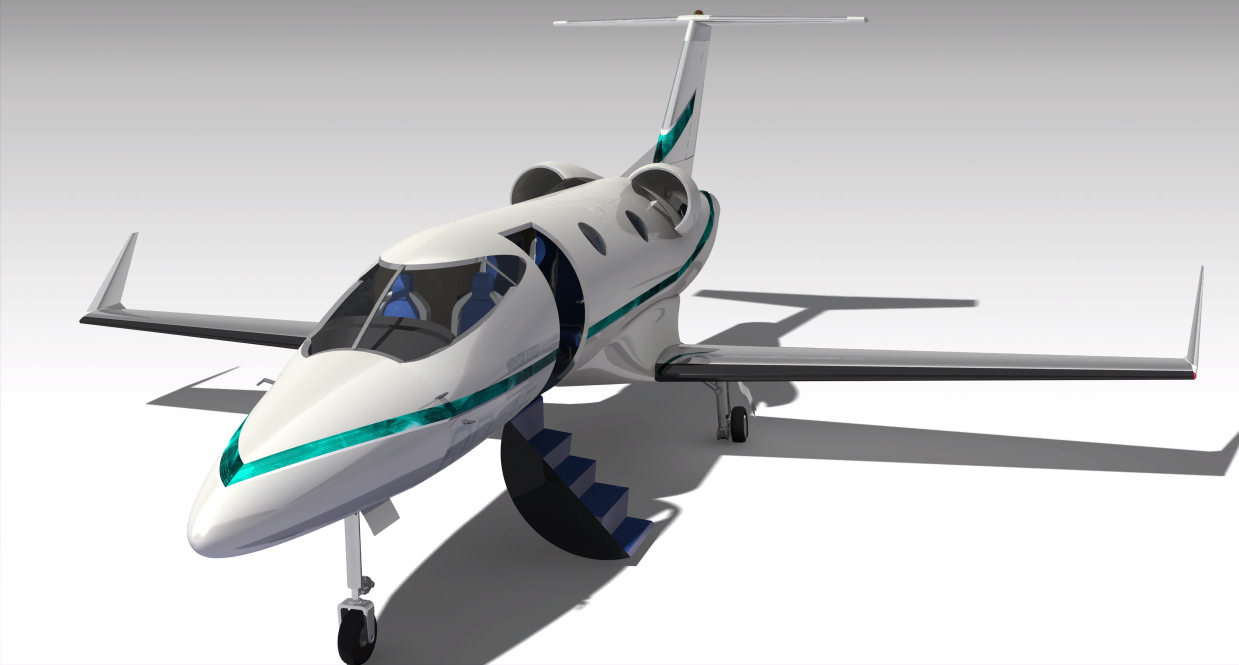
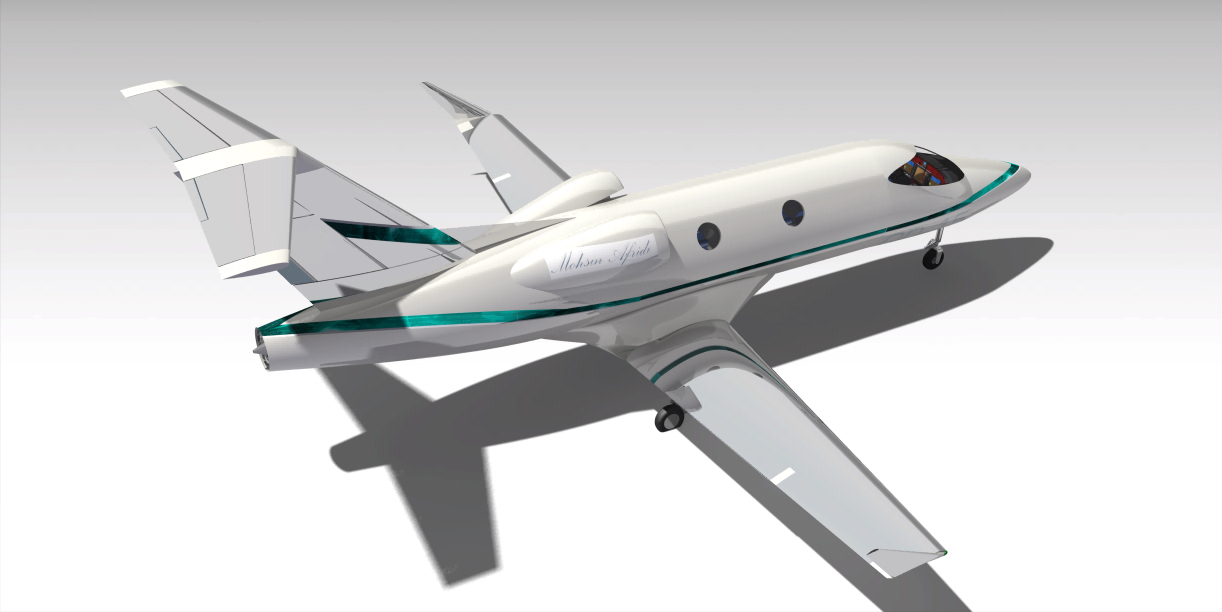
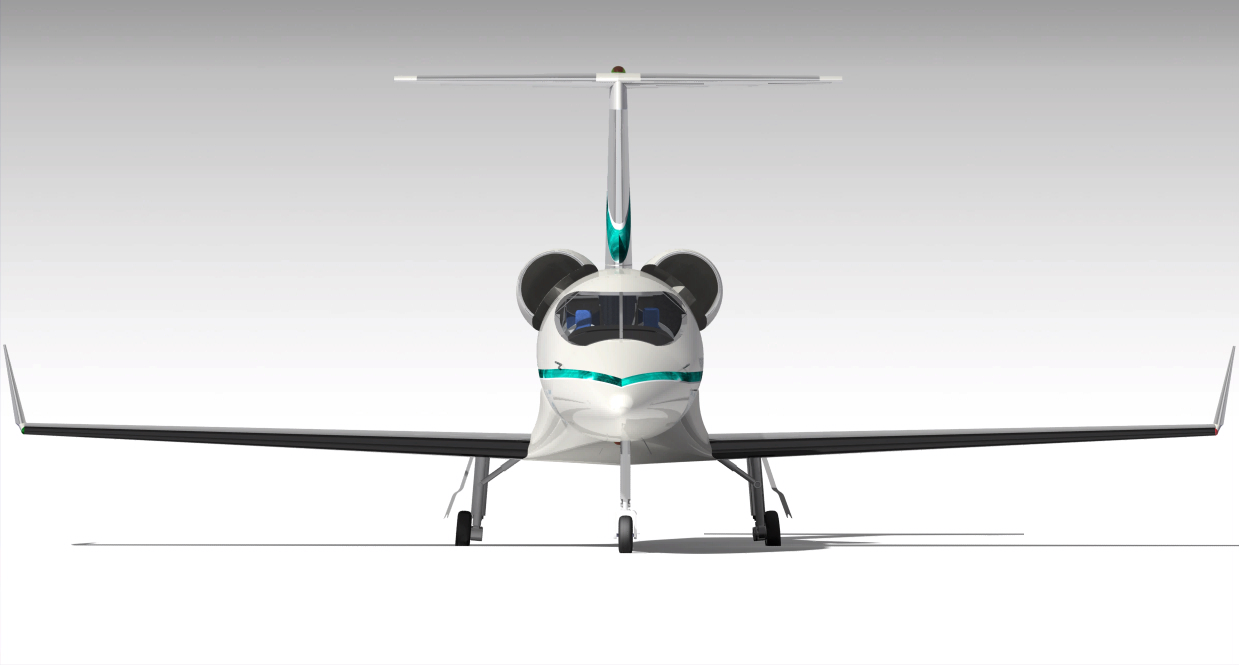
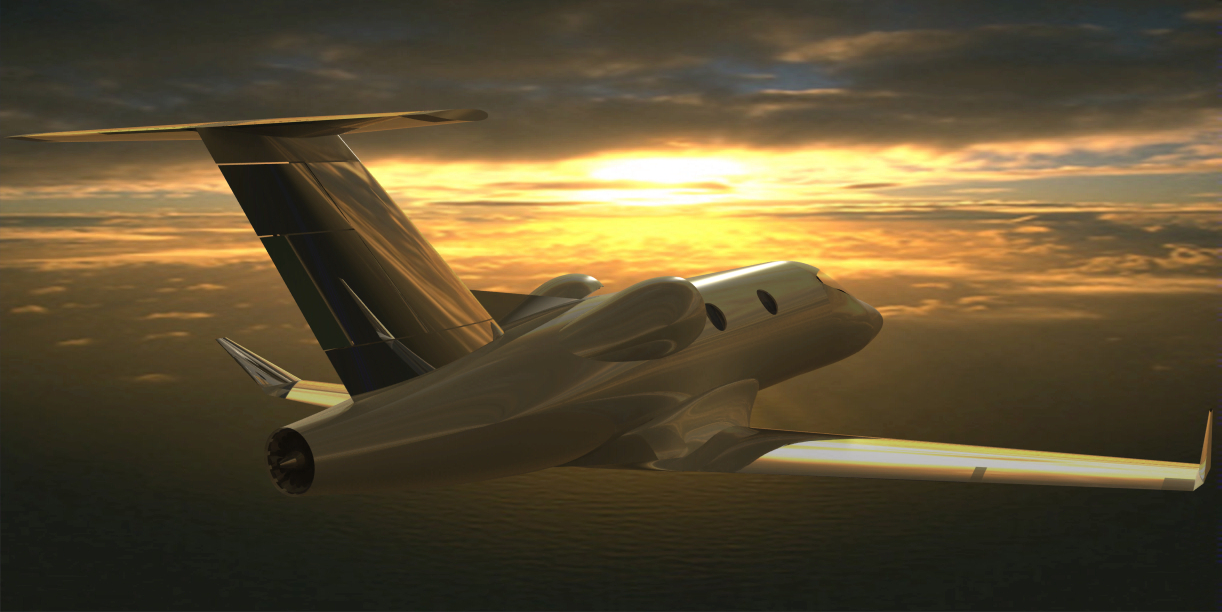

Transparent view of the Cabin layout showing Canadian 90th percentile mannequins. Useful for taking human factors into
account when designing ergonomics of cockpits and aircraft passenger cabins.
 |
 |
| |
| |
|
| Transparent cabin and cockpit view |

|
|
|
 |
 |

|
 |
|
 |
 |
 |
|
Pilot Jet interface >> Flight Deck with various panels, throttle quadrant etc

|
| Please Scroll down for a closeup view of pilot jet interface (avionics) |
The world class GARMIN G1000 all-glass avionics suite presents flight instrumentation, navigation, weather, terrain, traffic
and engine data on large-format, high-resolution displays.
| Fj44-1AP Williams Engine |
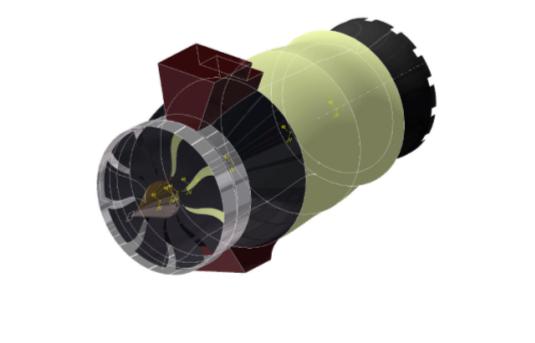
|



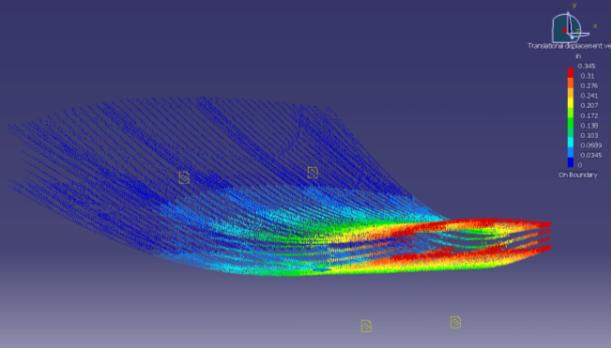
| Wing Fuselage Attachment for QD-15 |

|
| Nose landing gear Assembly |
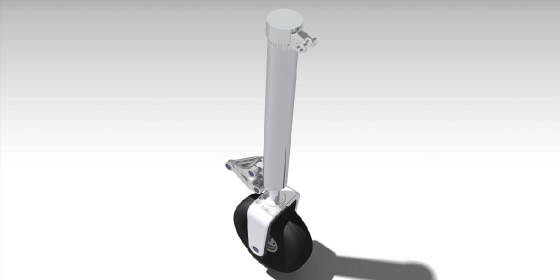
|
Designers always design keeping in mind the operating conditions of the system. A Trailing Link main landing gear was therefore
designed to account for high cycle operations in the regional application. The benefit is that a slightly heavier, trailing
link landing gear lessens the shock by slowing/spreading it over a longer period, which lessons fatigue on the airframe
| Vertical Tail structure side view |
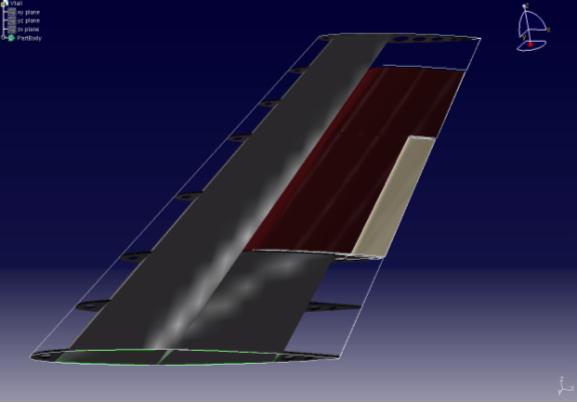
|
| Horizontal tail internal structure and Torque box |

|
| Vertical tail Torque box |
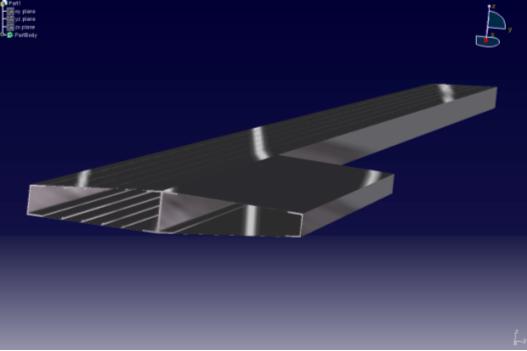
|

Horizontal tail with elevator and tab hinge-lines highlighted
| Vertical Tail Torque Box |

|
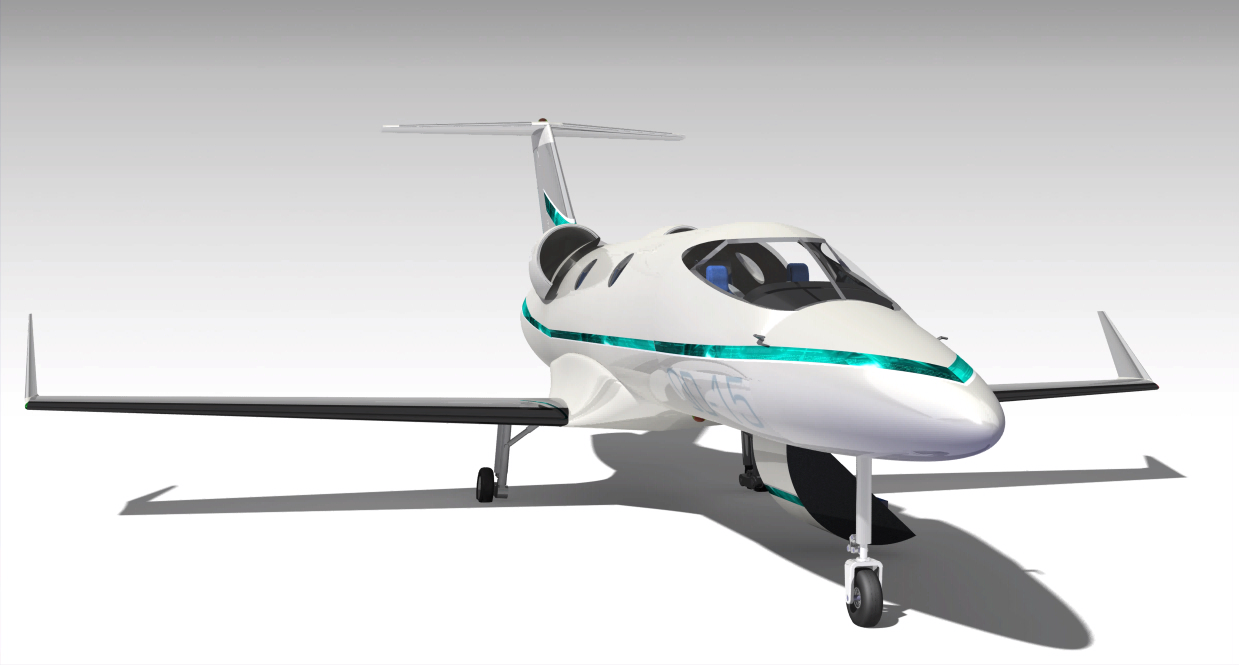
|
|
 |
|
|
|
|
|
 |

